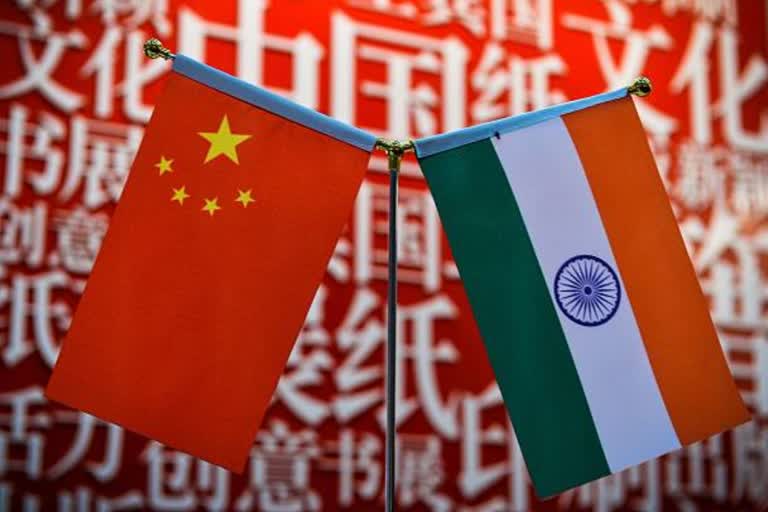Hyderabad:On October 20, 2019, talking to a group of Indian reporters at the conclusion of her interactions at the annual meeting of the International Monetary Fund and the World Bank, Union Finance Minister Nirmala Sitharaman said she will prepare a blueprint for international companies that are looking beyond China to make India as their preferred investment destination.
In this backdrop, this article attempts to take stock of China’s mounting problems and explores the opportunities it offers India.
Dragon mellowed down:
With the competitive advantage of cheap labour, business-friendly policies and an undervalued exchange rate, China once attracted huge investments and the world’s leading manufacturers shifted their assembling and manufacturing units there, to reap those advantages. Now the Dragon’s free ride appears to have come to an end. In fact, it has been mellowed down in the recent past, thanks to the socio-political developments at home and abroad.
On one hand, the economic growth slowed down in China. Its growth slumped to 6 per cent in the third quarter of 2019, the lowest level in nearly three decades. On the other hand, its involvement in the trade war with the United States is costing the Asian giant dearly, due to multibillion-dollar tariffs imposed by the American administration. Even the political ambitions of China to expand its hegemony in Asia and beyond are now being seen with a pinch of salt by the nations once enthusiastically jumped into its bandwagon of Belt Road Initiative.
In addition to all this, the protests in Hongkong, demanding larger autonomy is gaining momentum and is testing China’s endurance to protect the projection of its image as a so-called ‘soft state’. All these developments are taking a toll on China and the investors are now cautious in their investment plans in China and many low-end manufacturing units are already shifting their textile and toy-making units to the third world countries like Bangladesh and Vietnam.
Its time India grab the opportunity:
The fallout of a weakening China opens up new opportunities for India. China’s trade war with the U.S is still at large, and China is looking at meeting its import demand from countries other than the United States.
India could now exert pressure on the Chinese markets to open up for wide range of Indian goods and services and penetrate deeper into its telecommunications and software services market. It is in this context it is to be noted that China’s rural poverty has been falling consistently from 99 million in 2012 to 16.6 million in 2018 and it has nearly 900 million workers, which implies that there is a huge consumer market that can be catered to.
Read more:DPIIT asks Amazon, Flipkart to disclose names of top 5 sellers, capital structure, inventory details
While it is a welcome development that India-China bilateral trade touched $95.54 billion in 2018, it is a major concern that there is a trade deficit of $53 billion in China's favour, which is the highest that India has with any other nation in the world. India’s exports to China comprise of agricultural and primary goods, while China exports pharmacy goods, electronics and electrical equipment to India. It’s time that India improve its export competitiveness and tap the Chinese markets. This move is not only important economically but also pertinent in the strategic interests of India, in order to assert its dominance on the global stage.
According to the Mackinskey report. By 2040, Asia could account for more than half of global gross domestic product (GDP) and about 40% of global consumption. Hence a deeper economic engagement in Asia could help India become a stronger regional and global power and road to this, runs through China.
Secondly, the economic and political challenges that China is facing provides an opportunity for India to accommodate China-based global corporations. These companies based in China are now looking for destinations that would not be affected by the American tariffs so that they can export from those points. Instead of merely becoming a transit, India should evolve itself into a potential manufacturing hub that attracts these companies. If Bangladesh and Vietnam could do it, India with all the demographic dividend could surely achieve it, by overcoming the challenges like infrastructural bottle necks, and developing skill sets of its work force.
The Union Government is taking the right steps towards reaping these opportunities. After the recent informal summit between Chinese President and India’s Prime Minister, it has been decided to establish a new mechanism to discuss trade, investment and services between India and China. The Indian side will be headed by the finance minister while on the Chinese side, it would be headed by an official of vice-premier rank. In addition to this, Sitharaman’s overtures towards the multi nationals, to tap the opportunity came at the right time. It’s time the policy elite takes the agenda forward to turn them into real benefits at the ground level, in the form of employment and output growth.
(Written byDr.Mahendra Babu Kuruva, Assistant Professor at H.N.B. Garhwal Central University,Uttarakhand)
